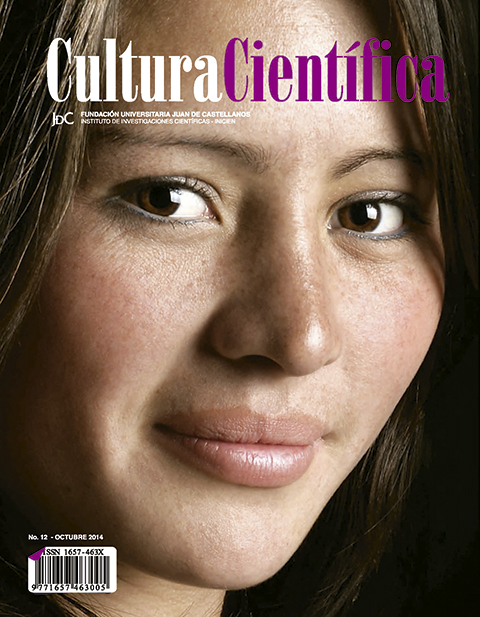Keywords:
encapsulation, extrusion, food, fructose.Abstract
The yogurt is milk derivative highly consumed around the world, as well as aloe vera. Both have reports tocontribute to human health. The purpose of this research is to determine the effect of the addition of capsules with aloe vera during the incubation of yogurt. Aloeverawas encapsulated in alginate at two different concentrations, 1% and 2%, addingthe capsules from the moment of incubation and comparing the effect of the addition of capsules withthe non-addition of them. For these samples were determined: pH, acidity, syneresis, lactic acid bacteria count, sensory evaluation and proximate analysis. The results indicated that for the three treatments pH values and acid behaved similarly to each characteristic of the yogurt during incubation. The lactic acid bacteria count indicated that treatment with capsules containing 2% sodium alginate had higher counts. Sensorially, three treatments had a favorable acceptability; proximate analysis had favorable values. In conclusion, the tests showed the viability of encapsulated aloe vera in the manufacture of yogurt during incubation time without being affected by the concentration of sodium alginate.Downloads
References
Aguirre, E., Galarza, M., Uribe, A., Ríos, M., López, F., Hernández, M. & Álvarez, M.(2008). Effect of mixing during fermentation in yogurt manufacturing. Journal Dairy Science, 91, 4454–4465.
ASSOCIATION OF OFICIAL ANALYTICAL CHEMISTS. (1990). Official Methods of Analysis. Virginia, 1000-1050.
ASSOCIATION OF OFICIAL ANALYTICAL CHEMISTS. (1984). Official Methods of Analysis. Virginia, 1000-1050
Araneda, C. & Valenzuela, F.(2009). Microencapsulación de extractantes: una metodología alternativa de extracción de metales. Revista Ciencia Ahora, 22(11), 9-19.
Baroutkoub, A., Zamir, R., Beglarian, R., Hassan, J., Zahra, S., Seyed, M. & Mohammad, E. (2010).Effects of probiotic yoghurt consumption on the serum cholesterol levels in hypercholestromic cases in Shiraz, Southern Iran. Scientific Research and Essays, 5, 2983-2986.
Blanco, S., Pacheco, E., & Frágenas, N. (2006). Evaluación física y nutricional de un yogurt con frutas tropicales bajo en calorías. Revista Facultad Agronomía (Maracay), 32, 131-144.
Briceño, A., Martínez, R. & García, K.(2001).Viabilidad y actividad de la flora láctica (StreptococcussalivariussspthermophilusyLactobacillusdelbrueckiisspbulgaricus) del yogurt en Venezuela. Acta Científica Venezolana, 52, 46–54.
Cagigas, R.& Blanco, J. (2002). Prebióticos y probióticos, una relación beneficiosa. Revista Cubana Alimentación y Nutrición, 16, 63-68.
Cook, M., Tzortzis, G., Charalampopoulos, D & Khutoryanskiy, V. (2012). Review Microencapsulation of probiotics for gastrointestinal delivery. Journal of Controlled Release, 162, 56-67.
Cortés, M., Chiralt, B.& Puente, L. (2005). Alimentos funcionales: historia con mucho presente y futuro. Vitae, Revista de la Facultad de Química Farmacéutica, 12, 5-14.
Choi, S. & Chung, M. (2003).A review on the relationship between aloe vera components and their biologic effects. Seminars in Integrative Medicine, 1, 53-62.
Domínguez, R., Arzate, R., Chanona, J., Welti, J., Alvarado, J., Calderón, G., Garibay, V. & Gutiérrez, G. (2012).El gel de aloe vera: estructura, composición química, procesamiento, actividad biológica e importancia en la industria farmacéutica y alimentaria. Revista Mexicana de Ingeniería Química, 11(1), 23-43.
Esquivel, V. & Gómez, G. (2007). Revisión: implicaciones metabólicas del consumo excesivo de fructosa. Revista AMC, 49(4), 198-202.
Ferraro, G. (2009). Revisión de aloe vera (barbadensismiller) en la dermatología actual.
Revista Argentina deDermatología, 90, 218-223.
Hui, Y. (1993). Dairy Science and Technology Handbook, Product Manufacturing. Vol. 2. Washington: VCH Publishers.
INSTITUTO COLOMBIANO DE NORMAS TÉCNICAS Y CERTIFICACIÓN. (2005). NTC 805. Productos lácteos. Leches fermentadas.
Kailasapathy, K. (2006). Survival of free and encapsulated probiotic bacteria and their effect on the sensory properties of yoghurt. Lebensmittel-Wissenschaft und-Technologie, 39, 1221-1227.
Kailasapathy, K., Harmstorf, I.& Phillips, M. (2008).Survival of Lactobacillus acidophilus and Bifidobacteriumanimalis ssp. lactis in stirred fruit yogurts. Food Science and Technology, 41, 1317-1322.
Kumar, A. & Singh, H. (2007). Review recent advances in microencapsulation of probiotics for industrial applications and targeted delivery. Trends in Food Science & Technology, 18, 240-251.
Krasaekoopt, W., Bhandari, B. & Deeth, H. (2003). Evaluation of encapsulation techniques of probiotics for yogurt. International Dairy Journal, 13(1), 3-13.
Lyer, R., Tomar, S., Kapila, S., Mani, J. & Singh, R. (2010). Probiotic properties of folate producing Streptococcus thermophiles strains. Food Research International, 43,103-110.
Parra, R. (2013).Efecto del té verde (Camelliasinensis L.) en las características fisicoquímicas, microbiológicas, proximales y sensoriales de yogurt durante el almacenamiento bajo refrigeración. Revista@limentech Ciencia y Tecnología Alimentaria, 11(1), 56-64.
Parra, R. (2012). Yogur en la salud humana. Revista Lasallista de Investigación, 9 (2), 162-177.
Parra, R., Martínez, C. & Espinosa, J. (2011). Comportamiento fisicoquímico de stevia, fructosa, dextrosa y lactosa como endulzantes a diferentes concentraciones durante el tiempo de incubación en la elaboración de yogurt entero. Bistúa: Revista de la Facultad de Ciencias Básicas, 9, 15-20.
Parra, R. (2010). Revisión: Microencapsulación de Alimentos. Revista Facultad Nacional de Agronomía, 63,5669-5684.
Ranadheera, R., Baines, S. & Adams, C. (2010).Review Importance of food in probiotic efficacy. Food Research International, 43,1-7.
Rodríguez, I., Santana, O., Recio, O & Fuentes, M. (2006). Beneficios del Aloe Vera l. (sábila) en las afecciones de la piel. Revista Cubana de Enfermería, 22,1-5.
Ruiz, A & Ramírez, A. (2009). Elaboración de yogur con probióticos (Bifidobacte-riumspp. y Lactobacillusácidophilus) e inulina. RevistaFacultadAgronomía (LUZ), 26, 223-242.
Soukoulis, C., Panagiotidis, P., Koureli, R. & Tzia, C. (2007).Industrial Yogurt Manufacture: Monitoring of Fermentation Process and Improvement of Final Product Quality. J. Dairy Sci, 90, 2641-2654.
Sultana, K., Godward, G., Reynolds, N., Arumugaswamy, R., Peiris, P. & Kailasapathy, K. (2000).Encapsulation of probiotic bacteria with alginate–starch and evaluation of survival in simulated gastrointestinal conditions and in yoghurt. International Journal of Food Microbiology, 62, 47-55.
Shori, A. & Baba, A. (2012). Viability of lactic acid bacteria and sensory evaluation in Cinnamomumverum and Allium sativum-bio-yogurts made from camel and cow milk. Journal of the Association of Arab Universities for Basic and Applied Sciences, 11, 50-55.
Woraharn, S., Chaiyasut, C., Sirithunyalug, B. & Sirithunyalug, J. (2010).Survival enhancement of probiotic Lactobacillus plantarumCMU-FP002 by granulation and encapsulation techniques. African Journal of Microbiology Research, 4(20), 2086-2093.
Zare, F., Champagne, C., Simpson, B., Orsat, V. & Boye, J. (2012).Effect of the addition of pulse ingredients to milk on acid production by probiotic and yoghurt starter cultures. Food Science and Technology, 45, 155-160.
ASSOCIATION OF OFICIAL ANALYTICAL CHEMISTS. (1990). Official Methods of Analysis. Virginia, 1000-1050.
ASSOCIATION OF OFICIAL ANALYTICAL CHEMISTS. (1984). Official Methods of Analysis. Virginia, 1000-1050
Araneda, C. & Valenzuela, F.(2009). Microencapsulación de extractantes: una metodología alternativa de extracción de metales. Revista Ciencia Ahora, 22(11), 9-19.
Baroutkoub, A., Zamir, R., Beglarian, R., Hassan, J., Zahra, S., Seyed, M. & Mohammad, E. (2010).Effects of probiotic yoghurt consumption on the serum cholesterol levels in hypercholestromic cases in Shiraz, Southern Iran. Scientific Research and Essays, 5, 2983-2986.
Blanco, S., Pacheco, E., & Frágenas, N. (2006). Evaluación física y nutricional de un yogurt con frutas tropicales bajo en calorías. Revista Facultad Agronomía (Maracay), 32, 131-144.
Briceño, A., Martínez, R. & García, K.(2001).Viabilidad y actividad de la flora láctica (StreptococcussalivariussspthermophilusyLactobacillusdelbrueckiisspbulgaricus) del yogurt en Venezuela. Acta Científica Venezolana, 52, 46–54.
Cagigas, R.& Blanco, J. (2002). Prebióticos y probióticos, una relación beneficiosa. Revista Cubana Alimentación y Nutrición, 16, 63-68.
Cook, M., Tzortzis, G., Charalampopoulos, D & Khutoryanskiy, V. (2012). Review Microencapsulation of probiotics for gastrointestinal delivery. Journal of Controlled Release, 162, 56-67.
Cortés, M., Chiralt, B.& Puente, L. (2005). Alimentos funcionales: historia con mucho presente y futuro. Vitae, Revista de la Facultad de Química Farmacéutica, 12, 5-14.
Choi, S. & Chung, M. (2003).A review on the relationship between aloe vera components and their biologic effects. Seminars in Integrative Medicine, 1, 53-62.
Domínguez, R., Arzate, R., Chanona, J., Welti, J., Alvarado, J., Calderón, G., Garibay, V. & Gutiérrez, G. (2012).El gel de aloe vera: estructura, composición química, procesamiento, actividad biológica e importancia en la industria farmacéutica y alimentaria. Revista Mexicana de Ingeniería Química, 11(1), 23-43.
Esquivel, V. & Gómez, G. (2007). Revisión: implicaciones metabólicas del consumo excesivo de fructosa. Revista AMC, 49(4), 198-202.
Ferraro, G. (2009). Revisión de aloe vera (barbadensismiller) en la dermatología actual.
Revista Argentina deDermatología, 90, 218-223.
Hui, Y. (1993). Dairy Science and Technology Handbook, Product Manufacturing. Vol. 2. Washington: VCH Publishers.
INSTITUTO COLOMBIANO DE NORMAS TÉCNICAS Y CERTIFICACIÓN. (2005). NTC 805. Productos lácteos. Leches fermentadas.
Kailasapathy, K. (2006). Survival of free and encapsulated probiotic bacteria and their effect on the sensory properties of yoghurt. Lebensmittel-Wissenschaft und-Technologie, 39, 1221-1227.
Kailasapathy, K., Harmstorf, I.& Phillips, M. (2008).Survival of Lactobacillus acidophilus and Bifidobacteriumanimalis ssp. lactis in stirred fruit yogurts. Food Science and Technology, 41, 1317-1322.
Kumar, A. & Singh, H. (2007). Review recent advances in microencapsulation of probiotics for industrial applications and targeted delivery. Trends in Food Science & Technology, 18, 240-251.
Krasaekoopt, W., Bhandari, B. & Deeth, H. (2003). Evaluation of encapsulation techniques of probiotics for yogurt. International Dairy Journal, 13(1), 3-13.
Lyer, R., Tomar, S., Kapila, S., Mani, J. & Singh, R. (2010). Probiotic properties of folate producing Streptococcus thermophiles strains. Food Research International, 43,103-110.
Parra, R. (2013).Efecto del té verde (Camelliasinensis L.) en las características fisicoquímicas, microbiológicas, proximales y sensoriales de yogurt durante el almacenamiento bajo refrigeración. Revista@limentech Ciencia y Tecnología Alimentaria, 11(1), 56-64.
Parra, R. (2012). Yogur en la salud humana. Revista Lasallista de Investigación, 9 (2), 162-177.
Parra, R., Martínez, C. & Espinosa, J. (2011). Comportamiento fisicoquímico de stevia, fructosa, dextrosa y lactosa como endulzantes a diferentes concentraciones durante el tiempo de incubación en la elaboración de yogurt entero. Bistúa: Revista de la Facultad de Ciencias Básicas, 9, 15-20.
Parra, R. (2010). Revisión: Microencapsulación de Alimentos. Revista Facultad Nacional de Agronomía, 63,5669-5684.
Ranadheera, R., Baines, S. & Adams, C. (2010).Review Importance of food in probiotic efficacy. Food Research International, 43,1-7.
Rodríguez, I., Santana, O., Recio, O & Fuentes, M. (2006). Beneficios del Aloe Vera l. (sábila) en las afecciones de la piel. Revista Cubana de Enfermería, 22,1-5.
Ruiz, A & Ramírez, A. (2009). Elaboración de yogur con probióticos (Bifidobacte-riumspp. y Lactobacillusácidophilus) e inulina. RevistaFacultadAgronomía (LUZ), 26, 223-242.
Soukoulis, C., Panagiotidis, P., Koureli, R. & Tzia, C. (2007).Industrial Yogurt Manufacture: Monitoring of Fermentation Process and Improvement of Final Product Quality. J. Dairy Sci, 90, 2641-2654.
Sultana, K., Godward, G., Reynolds, N., Arumugaswamy, R., Peiris, P. & Kailasapathy, K. (2000).Encapsulation of probiotic bacteria with alginate–starch and evaluation of survival in simulated gastrointestinal conditions and in yoghurt. International Journal of Food Microbiology, 62, 47-55.
Shori, A. & Baba, A. (2012). Viability of lactic acid bacteria and sensory evaluation in Cinnamomumverum and Allium sativum-bio-yogurts made from camel and cow milk. Journal of the Association of Arab Universities for Basic and Applied Sciences, 11, 50-55.
Woraharn, S., Chaiyasut, C., Sirithunyalug, B. & Sirithunyalug, J. (2010).Survival enhancement of probiotic Lactobacillus plantarumCMU-FP002 by granulation and encapsulation techniques. African Journal of Microbiology Research, 4(20), 2086-2093.
Zare, F., Champagne, C., Simpson, B., Orsat, V. & Boye, J. (2012).Effect of the addition of pulse ingredients to milk on acid production by probiotic and yoghurt starter cultures. Food Science and Technology, 45, 155-160.
Downloads
Published
2014-10-27
How to Cite
Parra Huertas, R. A. (2014). Encapsulation of aloe vera and its effect during yogur incubation. Cultura científica, (12), 66–73. Retrieved from https://revista.jdc.edu.co/Cult_cient/article/view/154
Issue
Section
Review article





